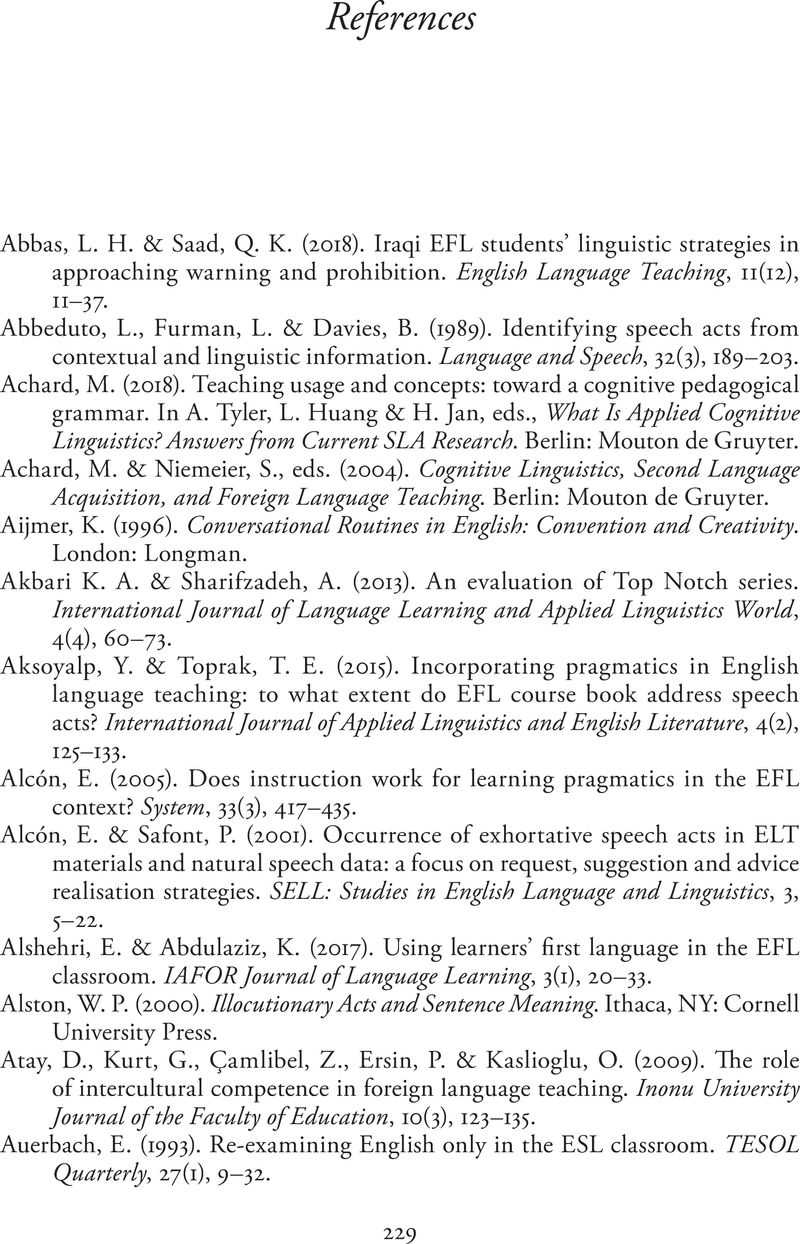Book contents
- Speech Acts in English
- Studies in English Language
- Speech Acts in English
- Copyright page
- Dedication
- Contents
- Figures
- Tables
- Acknowledgements
- Abbreviations
- 1 Introduction
- 2 What Contemporary Research Tells Us about Speech Acts
- 3 Critical Assessment of the Representation of Speech Acts in Advanced EFL Textbooks
- 4 A Cognitive Pedagogical Grammar of Directive Speech Acts I: Know-What and Know-How of Directives
- 5 A Cognitive Pedagogical Grammar of Directive Speech Acts II: Activities and Practice Materials
- 6 Conclusions
- References
- Index
- References
References
Published online by Cambridge University Press: 16 November 2020
- Speech Acts in English
- Studies in English Language
- Speech Acts in English
- Copyright page
- Dedication
- Contents
- Figures
- Tables
- Acknowledgements
- Abbreviations
- 1 Introduction
- 2 What Contemporary Research Tells Us about Speech Acts
- 3 Critical Assessment of the Representation of Speech Acts in Advanced EFL Textbooks
- 4 A Cognitive Pedagogical Grammar of Directive Speech Acts I: Know-What and Know-How of Directives
- 5 A Cognitive Pedagogical Grammar of Directive Speech Acts II: Activities and Practice Materials
- 6 Conclusions
- References
- Index
- References
Summary

- Type
- Chapter
- Information
- Speech Acts in EnglishFrom Research to Instruction and Textbook Development, pp. 229 - 245Publisher: Cambridge University PressPrint publication year: 2020

